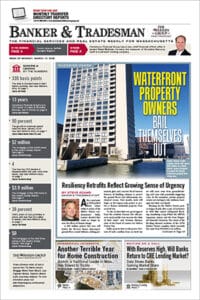
Andrew Mikula
Allow me to put some hard numbers to Greater Boston’s housing shortage. In 2023, the Metropolitan Area Planning Council projected that the region would need 154,000 new housing units by 2030 (or 22,000 per year for seven years) to meet demand. In the seven years from 2017-2023, Greater Boston actually permitted 87,945 units, or about 57 percent of 154,000.
So how is the region going to almost double its rate of housing production in the coming years? One common answer is to focus on large-scale solutions such as high-density apartments around transit stops and wholesale transformations of race tracks and industrial parks into new urban neighborhoods.
These solutions come with some distinct advantages for builders who rely on economies of scale and standardizing design features to make their projects viable. But they also are not easily adaptable to the vast majority of existing neighborhoods in Greater Boston. Consider that in most communities in the region, upwards of 80 percent of residential land is zoned exclusively for single-family homes. Among Greater Boston communities with access to rapid transit, more than 90 percent of land parcels have fewer than 15,000 square feet.
The technical and political challenges involved in the rezoning and land assemblage needed to make large-scale solutions replicable across Greater Boston create a high barrier to entry for development professionals. Simultaneously, there are too few redevelopment opportunities sized appropriately for large-scale projects to be the only solution.
Legalization Won’t Be Enough
By contrast, small-scale solutions can have a big impact if they are applied to many different sites and neighborhood contexts. For example, California permitted more than 18,000 accessory dwelling units per year between 2018 and 2023. As a share of the state’s existing housing stock, that’s about as much annual production as is expected from the MBTA Communities Act once it is fully implemented.
However, precedents from other places suggest that small infill developments often need more than just legality to be scalable. In Minneapolis, which legalized two- and three-unit buildings on every residential lot in the city in 2018, the reforms have only created about 100 new housing units per year in a city of 400,000. Proponents are quick to point out that height and density restrictions make these small apartment buildings unviable to build in the vast majority of cases.
Beyond height and density, there are a litany of other reforms that could help small-scale developments succeed.
Annual accessory dwelling unit permits more than tripled in Seattle after the city removed parking requirements for backyard cottages in 2019. Closer to home, Boston Indicators projected that reforming building codes to allow some apartment buildings to have only one staircase “could conceivably net upwards of 130,000 new homes” in transit-rich areas of Greater Boston, in part by making it viable to build on smaller lots.
Individual cities could go even further than regulatory reforms by taking a page out of South Bend’s book. In 2022, the Indiana city created a package of pre-approved designs for small-scale multi-family buildings, simultaneously streamlining permitting and helping developers reduce costs from architectural and engineering fees.
Smaller Projects Are More Nimble
Right now, it often seems like large developments are the only answer to Greater Boston’s housing crisis because the current political and regulatory system favors them.
Single-family zoning often means that adding homes to an existing neighborhood requires hiring lawyers and undergoing lengthy discretionary processes to obtain rezonings, which is too expensive and risky for most small-scale builders. Building codes and parking requirements make many projects financially unviable regardless of the permitting process. But it doesn’t have to be this way.
Policy reforms that favor small-scale, incremental additions to the housing stock could create a replicable industry standard for this type of development in much the same way that regulatory constraints contributed to today’s dominance of mid-rise apartments with panel-based facades.
By operating at a smaller scale and being more nimble than larger projects, incremental development can accommodate a broader diversity of housing needs in existing residential neighborhoods. It could also allow more seniors to downsize within their communities and let Millennials return to communities where they grew up after forming families of their own.
To state the obvious, large- and small-scale solutions are not mutually exclusive, and there are certainly areas where development is inherently complex and requires large-scale solutions, perhaps because of environmental contamination or engineering difficulties.
Still, the scale of Greater Boston’s housing crisis requires not just building as many units at a time as possible, but tailoring solutions to many different types of places. While reforms that facilitate large-scale development in mostly commercial and industrial districts will affect a very small area in most municipalities, thus limiting development opportunities, facilitating new housing scaled to existing residential districts offers much more flexibility.
Ultimately, this small-scale approach will enable more Greater Boston communities to remain family-oriented and multi-generational, bolstering the best qualities of the places we already know and love.
Andrew Mikula is the senior housing fellow at the Pioneer Institute in Boston.





